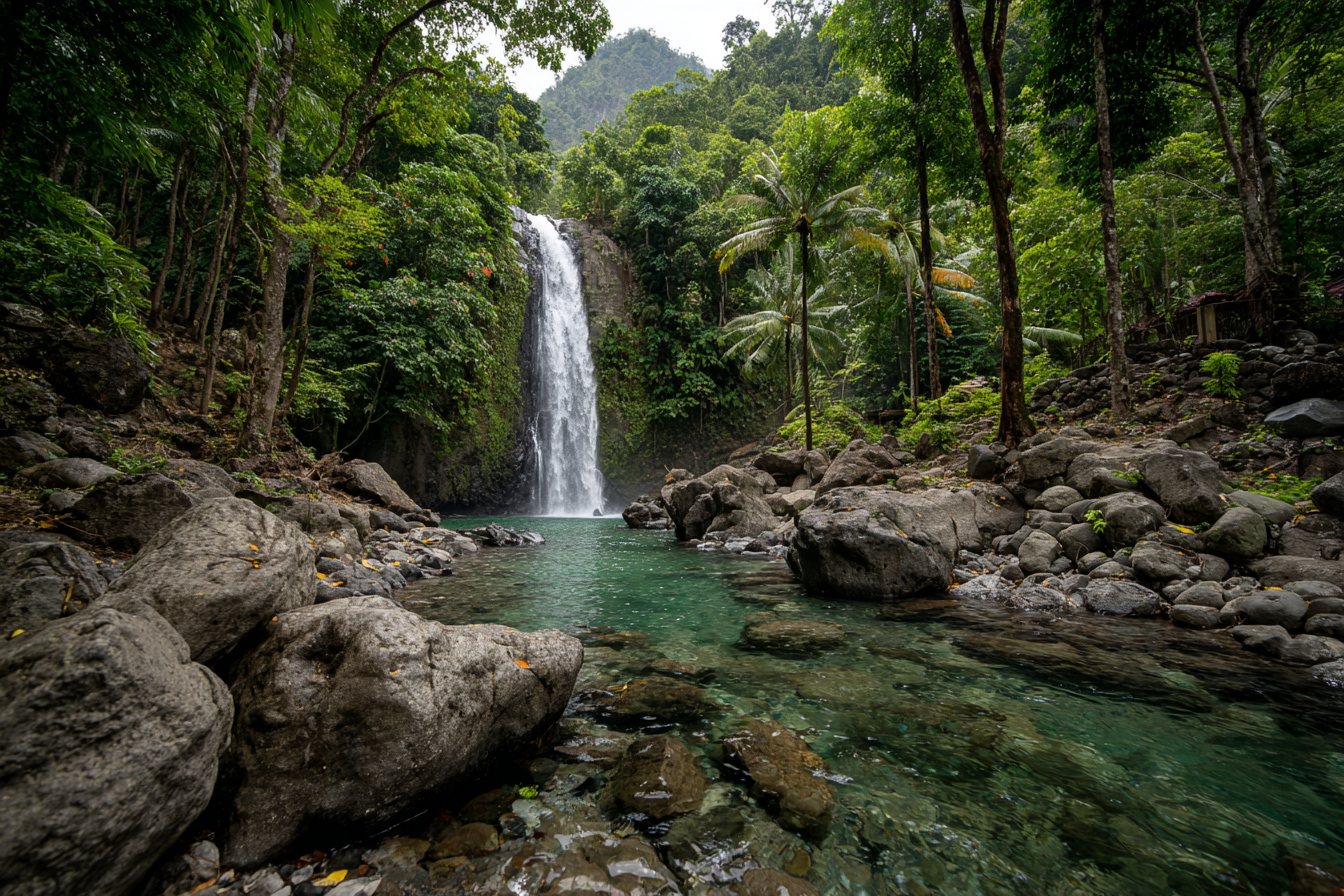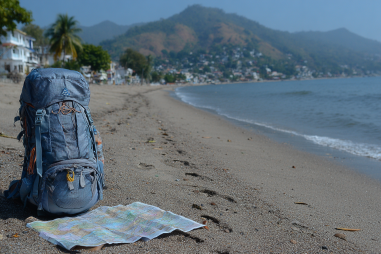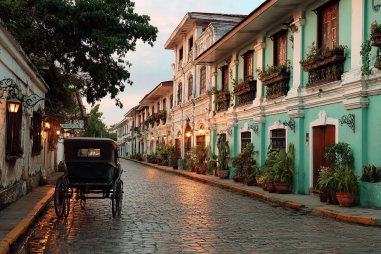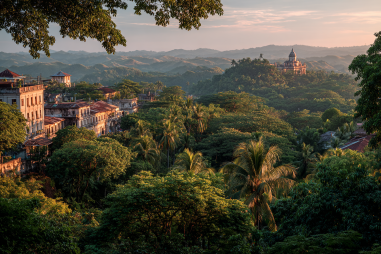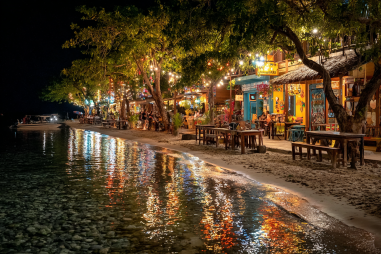Camiguin, a small island province in the Philippines, is often hailed as the “Island Born of Fire” because of its volcanic origin and stunning natural landscapes. Despite its compact size, this island is packed with a variety of attractions that appeal to nature lovers, adventure seekers, and history buffs alike. From mesmerizing waterfalls to pristine white sandbars and mysterious underwater cemeteries, Camiguin offers a unique getaway filled with unforgettable experiences. Whether you’re looking to hike, dive, relax, or explore, this island has something for everyone.
Overview of Camiguin’s Key Tourist Attractions
Camiguin’s charm comes from its diverse natural wonders and rich heritage sites. With only seven municipalities, the island is easily navigable, making it perfect for tourists who want to maximize their visit. The island is famous for its volcanic peaks, cool waterfalls, warm hot springs, and crystal-clear waters. Key tourist spots include Katibawasan Falls, the White Island sandbar, the hauntingly beautiful Sunken Cemetery, and the active Hibok-Hibok Volcano. Aside from natural attractions, there are historical sites like the Old Church Ruins, as well as fantastic dive spots teeming with marine life. Each site offers a distinct taste of Camiguin’s natural beauty and cultural heritage.
Katibawasan Falls
One of the most picturesque spots on the island, Katibawasan Falls is a stunning 250-foot waterfall that cascades down a lush forest cliff into a cool, inviting pool below. It’s located just a few kilometers from the town center of Mambajao and is very accessible. The waterfall is surrounded by verdant tropical foliage, making it a perfect spot for nature photography, swimming, or simply hiking along the nearby trails. Early morning visits are best to avoid crowds and to catch the sunlight filtering through the trees, creating a magical atmosphere.
White Island Sandbar
A trip to Camiguin wouldn’t be complete without stopping at White Island, a pristine, crescent-shaped sandbar just off the northern tip of the island. This sandbar is renowned for its powdery white sands and crystal-clear turquoise waters, which contrast beautifully with the deep blue sea. The island is uninhabited and offers panoramic views of the main island’s volcanoes. Visitors can sunbathe, swim, snorkel, or simply relax while enjoying the gentle sea breeze. Because White Island is a sandbar, it’s important to check the tides before visiting to ensure accessibility and the best experience.
Sunken Cemetery
One of Camiguin’s most unique and hauntingly beautiful landmarks is the Sunken Cemetery. This underwater cemetery was created by volcanic activity in the 1870s that caused part of the land to sink beneath the sea. Today, a large cross marker stands on the water’s surface, symbolizing a memorial to those buried beneath the waves. Visitors can snorkel or take a small boat to view the submerged tombstones through the luminous blue waters. The lore and somber beauty make this site both fascinating and reflective. It’s especially enchanting during sunrise or sunset when the soft light adds to the atmosphere.
Hibok-Hibok Volcano
For adventurous travelers, hiking Hibok-Hibok Volcano is a must. This active stratovolcano is one of Camiguin’s seven volcanoes, standing tall at 1,250 meters. The hike to its summit offers breathtaking views of the island and beyond. The trail passes through tropical forests, steep slopes, and volcanic landscapes, giving a chance to spot unique flora and fauna. Due to its active status, visitors should check with local authorities or guides for safe hiking times and regulations. Reaching the summit can be challenging but is an unforgettable reward for nature enthusiasts and adventure lovers.
Agoho Hot Spring
Agoho Hot Spring is a natural geothermal spring located near the island’s volcanoes. The warm, mineral-rich waters are said to have therapeutic benefits and provide a relaxing experience after a day of hiking or exploring. Surrounded by a garden setting, the hot spring pools are perfect for soaking and unwinding while enjoying the tranquil environment. Because of its warmth, the hot spring is especially enjoyable in cooler months or evenings. It’s a great spot for families and couples alike to relax and take in the serene backdrop of Camiguin’s lush landscapes.
Old Church Ruins
The Old Church Ruins, locally known as the Guiob Church Ruins, are a testament to the island’s colonial past. These remnants date back to the 16th century when Spanish missionaries first arrived. The church was devastated by a volcanic eruption in the 1870s, and today, the skeletal remains of the stone walls stand as historical markers surrounded by tropical foliage. Visiting the ruins offers a glimpse into the island’s history and resilience in the face of nature’s challenges. Nearby, visitors can find informative plaques and a peaceful atmosphere perfect for reflection and photography.
Dive Spots and Snorkeling Areas
Camiguin is also a hidden gem for diving and snorkeling enthusiasts. The island’s surrounding waters are teeming with vibrant coral reefs, diverse marine life, and underwater volcanic formations. Popular dive sites such as the Old Volcano Dive offer encounters with schools of fish, sea turtles, and colorful corals. Snorkelers can enjoy shallow reefs around White Island and Mantigue Island, where calm waters and good visibility make for excellent underwater exploration. Many local dive shops provide guided tours, equipment rentals, and introductory courses, making it accessible for beginners and experts alike.
Best Time to Visit Each Spot
While Camiguin can be visited year-round, timing your trip according to the season can enhance your experience at specific attractions:
- Katibawasan Falls: Best visited during the dry season (March to May) when the trails are less slippery and the waterfall is more vibrant.
- White Island Sandbar: Early mornings and low tide are ideal for visiting to avoid crowds and to enjoy the full stretch of the sandbar.
- Sunken Cemetery: Clear weather, usually between February and May, provides the best visibility for snorkeling and underwater viewing.
- Hibok-Hibok Volcano: Dry months are preferable for hiking to avoid muddy and slippery trails and to ensure safety.
- Agoho Hot Spring: Although open year-round, the cooler months from December to February offer a more pleasant soaking experience.
- Old Church Ruins: Any time of the year is good for a visit; however, mornings are best to avoid the midday heat.
- Dive and Snorkeling Spots: March to June offers calm seas and excellent underwater visibility, perfect for diving and snorkeling.
Planning your trip around these windows will help you get the most out of each destination on the island.
Camiguin offers a rich palette of experiences that cater to all interests and adventuring levels. Whether you find yourself gazing at the cascading waters of Katibawasan Falls, walking the soft sands of White Island, exploring underwater history at the Sunken Cemetery, or climbing the rugged paths of Hibok-Hibok Volcano, this island feels like a treasure waiting to be discovered. With its plentiful natural wonders, warm hospitality, and distinct cultural spots, Camiguin truly guarantees an unforgettable island escape.

